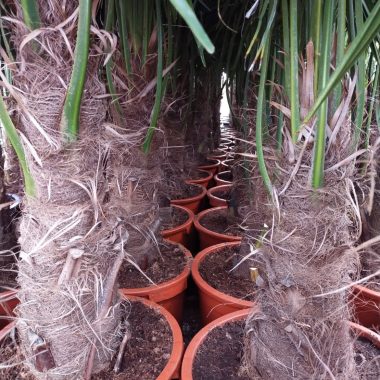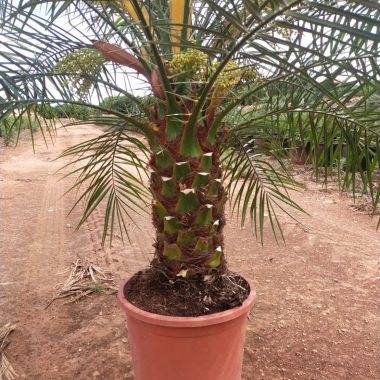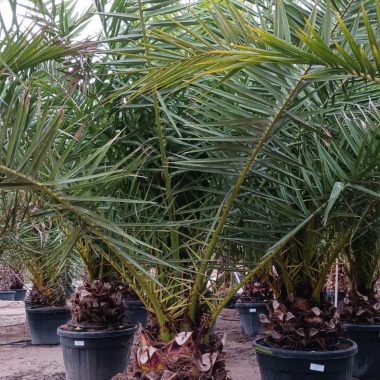Description
The Yucca rostrata, also known as sprat palm, is an ornamental plant belonging to the genus Yucca. It is native to northern Mexico and is prized for its distinctive appearance and hardiness.
Here are some of the main features of Yucca rostrata:
- Blades in the shape of a sprat: The most distinctive feature of Yucca rostrata is its sprat-shaped leaves. These leaves are narrow, stiff, and pointed, with a silvery-green to blue-green color. They grow in a rosette shape from the center of the plant.
- Fibrous and thin trunko: As the plant matures, it develops a trunk that is generally thin and fibrous. The trunk can reach considerable heights, although Yucca rostrata tends to be more compact compared to other Yucca species.
- White bell-shaped flowers: It produces white, bell-shaped flowers that emerge in aerial panicles. The flowers are fragrant and appear in summer.
- Fruits in capsule form: After flowering, Yucca rostrata produces seed capsules.
- Drought resistance: It is known to be drought resistant and can survive in dry and poor soil conditions. This resistance makes it suitable for xeriscape landscapes and gardens with little water.
- Cold resistance: Yucca rostrata is cold hardy and can tolerate fairly low winter temperatures, making it suitable for regions with cold winters.
- Sun exposure: It prefers full-sun locations and is capable of thriving in warm, sunny climates.
- Low maintenance: It is a low-maintenance plant that does not require intensive care. It is resistant to many pests and diseases.
- Ornamental use: Yucca rostrata is popular in ornamental landscaping and is commonly used in xeriscape gardens, rockeries, and outdoor spaces with a drier, desert approach.
This plant is prized for its attractive architectural appearance and its ability to add a distinctive touch to landscapes. However, keep in mind that due to its adult size and the shape of its pointed leaves, it is important to select a suitable location to avoid problems with space and safety.








Reviews
There are no reviews yet.